The 2563rd birthday of the Buddha was celebrated in Leh, Ladakh, on May 18th with the usual fervor, according to articles in The Dispatch and the Daily Excelsior, two news sources in that part of India..
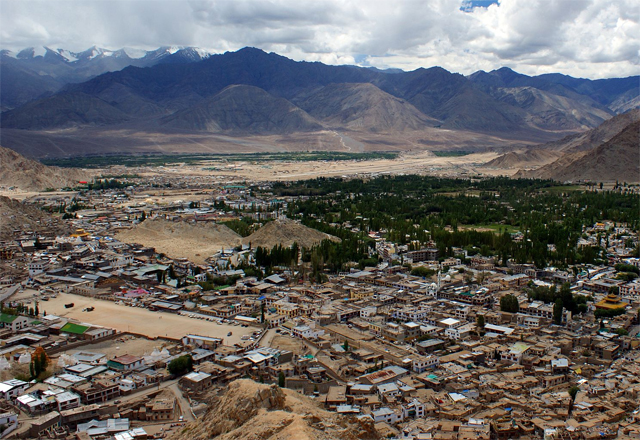
Organized by the Ladakh Buddhist Association, the day started with a procession called the “Bumskor” that began at the Chowkhang Vihara, The procession went around Leh town and ended at the Leh Polo Ground. Devotees carried sacred books and scriptures along with tableaus representing the 12 stages in the life of the Buddha. Hundreds of school children participated in the festivities.
The President of the LBA, Tsewang Thinles, gave the welcoming address at the Polo Ground. He asked the Ladakhi people to follow the Buddha and live in harmony with others, thereby setting an example of peacefulness for all. Buddhists should practice the Dharma in a very real way, he maintained.
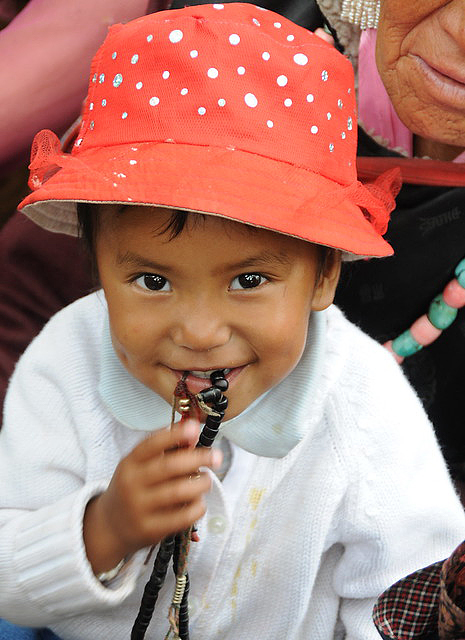
He urged his listeners to inculcate the values of Ladakh in the children in order to preserve the traditional Ladakhi culture. Hundreds of students from various schools sang songs praising Lord Buddha and they presented a skit that depicted his life.
Ven Shedup Chamba, the President of the All Ladakh Gonpa Association, Leh, said that the birthday of the Buddha was important for all Buddhists to observe since it marks not only his birth but also his enlightenment and his death. He urged his listeners to avoid using alcohol during celebrations, not because it violates the teachings of the Buddha but because it has harmful effects on individuals, families, and society as a whole.
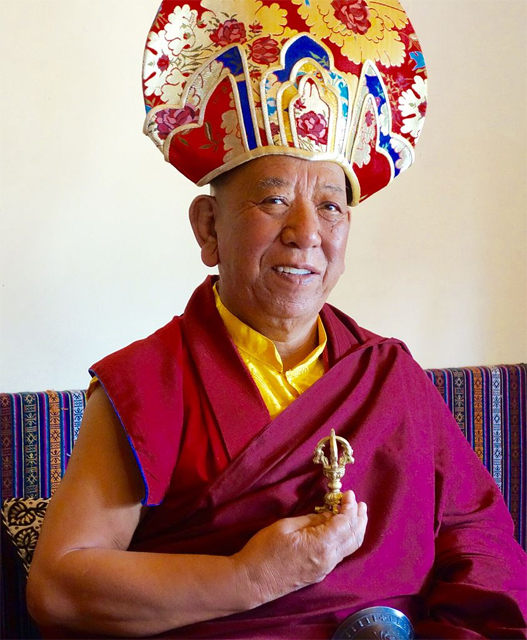
The major guest for the occasion was His Eminence Togdan Rinpoche. In his speech at the Polo Ground, the Rinpoche highlighted the teachings of the Buddha, which represent a gift to all people. He spoke about the life of the Buddha, emphasizing the peace, unity, and harmony that Buddhism fosters, as well as prosperity for society. He appealed to the crowd to avoid harmful practices and to cherish high moral standards and selfless attitudes.
The assumption that the beliefs and practices of Buddhism are primarily responsible for the peacefulness that does persist in Ladakh was not discussed by those two newspaper articles and perhaps not in so many words by the speakers at the events of the 18th. It is a controversial assumption among scholars, in fact.
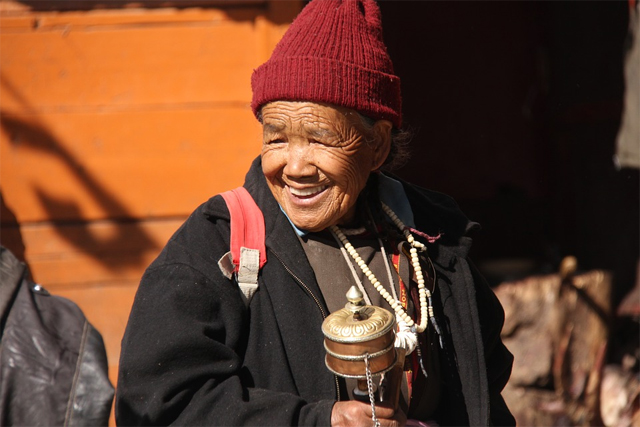
Uwe Gielen, for instance, who is an emeritus professor of psychology at St. Francis College in Brooklyn, maintains that the Buddhist beliefs of the Ladakhi people are primarily responsible for their nonviolence. In a 2004 paper, Gielen argues for the distinct differences between the social structures of Ladakh, which he sees as cooperative and synergistic, and the aggressive individualism of the U.S. They “stand in stark contrast” to each other, he writes.
He bases his conclusions on fieldwork he did around Leh in 1980-81. He used a questionnaire on a range of Ladakhi people soliciting their reactions to fictional stories set in Ladakh in which adults and children had to deal with difficult problems. The responses to his questionnaire allowed him to reach conclusions as to how the people decide complex moral issues. They also allowed him to assess the ways the Ladakhi would reason social concerns such as interpersonal relationships, guilt and punishment, friendship and anger, and so forth.
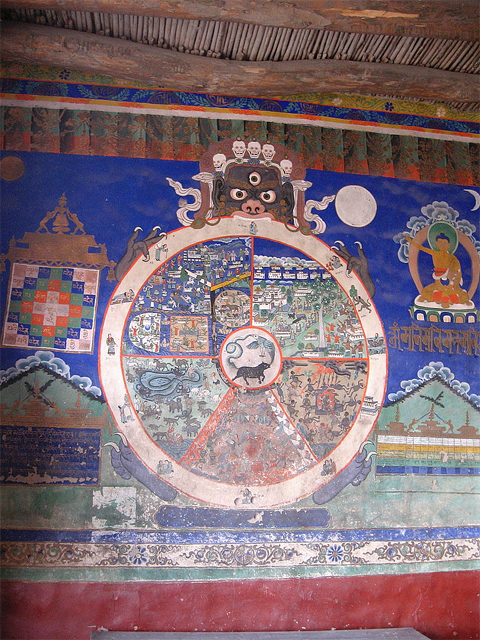
Gielen summarized his assessments of Ladakhi nonviolence as being based on a worldview that is best summarized by the Buddhist Wheel of Life image found near the entrances to their monasteries. Those images reaffirm the teachings of Tibetan Buddhism, which many Ladakhi believe in. They undermine natural human tendencies toward selfishness and thereby reduce interpersonal conflicts.
As a result of their Buddhist beliefs, their society is remarkable peaceful, he argues. People are normally quite cheerful and good-humored. Aggressive behavior “is extremely rare and confined to the occasional, usually harmless, fights between young men under the influence of the local beer,” he writes (p.174).
Fernanda Pirie, a British anthropologist at the University of Oxford, who did fieldwork in a village in the mountains south of Leh, disagrees. She rejects the idea that the peacefulness of the people is based on their Buddhism. In the opening chapter of her 2007 book Peace and Conflict in Ladakh: The Construction of a Fragile Web of Order, the anthropologist describes the practical ways conflicts are settled by the Ladakhi. They all know one another and prefer to not let conflicts fester.
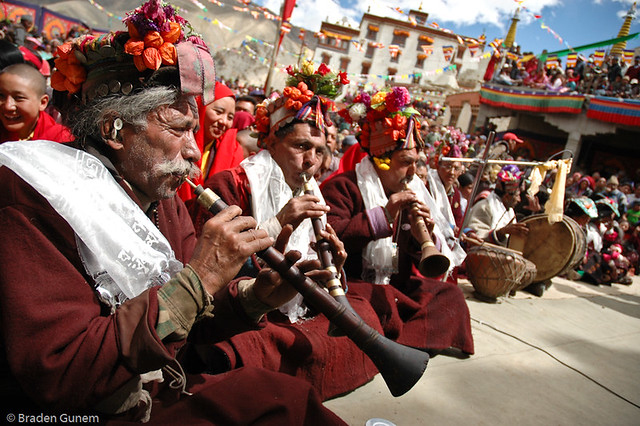
The Ladakhi feel a strong need to maintain order in their villages by resolving conflicts and controlling anger, issues that they think could promote violence. Her book reviews the social factors that promote their goal of maintaining peacefulness. They hold the village, named Photoksar, together by building cross-cutting ties such as mutual assistance groups and kinship connections.
They constantly downplay differences in wealth among the villagers. In fact, they steadfastly avoid talking about such matters or even acknowledging that there are differences in wealth. The villagers rotate leadership positions to make sure that even those who are highly competent do not get to stand out above others. People who quarrel are described in terms that suggest they are bad or dirty, words that convey strong negative feelings about the quarreling.
They do not accept the concepts of revenge or of justifiable anger. In sum, while acknowledging the importance of Buddhism to the villagers, Pirie argues that their social beliefs and practices are primarily responsible for their nonviolence.
None of this is meant to undercut the importance of the religious beliefs of the Buddhist Ladakhis and their celebrations of the birthday of the Buddha. But their peacefulness appears to be a more complex issue than just that.